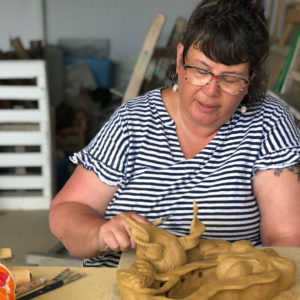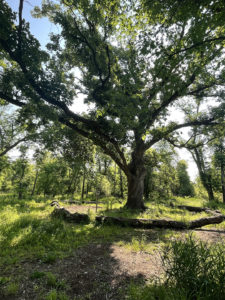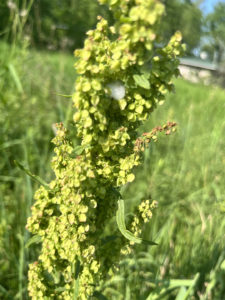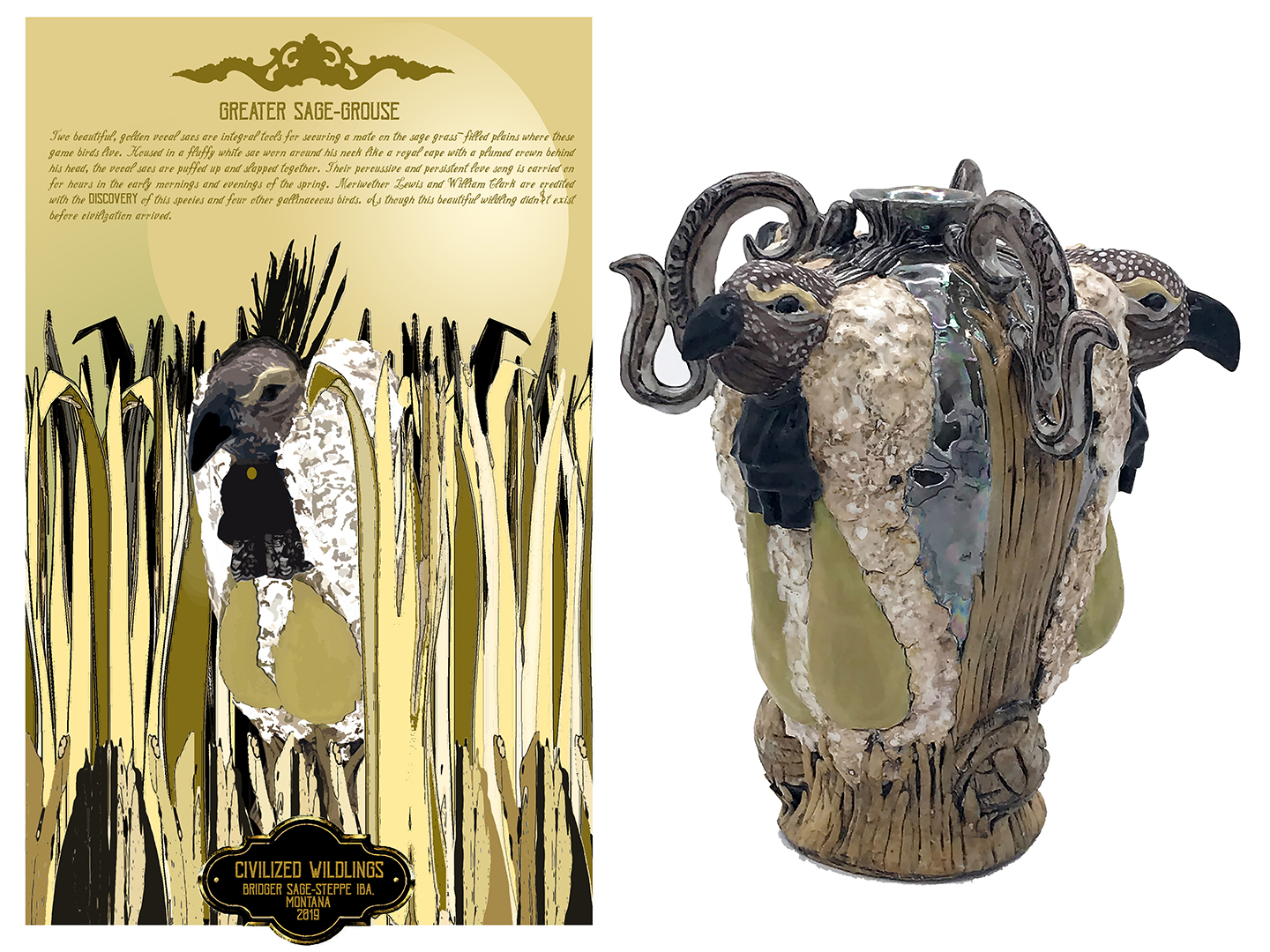“Everything that exists has its true name. The power of magic is nothing more than the power to command, based on the knowledge of the thing’s true nature.”
—Sparrowhawk, “Tales from Earthsea,” 2006, Studio Ghibli
 Tall grass, by any name, has given safe harbor to my enemies for most of my life. Initially lured to explore the realm of tall grasses, driven by curiosity and imagination, I walked carefree and in awe of the vast and tiny ecosystem. Unfortunately my reward, the too-long-lasting-misery-inducing-erase-all-the-fun reward for enjoying running through tall grass (maybe to catch some fireflies at night) was bite after bite after bite. To a mosquito, chigger, tick or any other blood-hungry insect, I was free lunch. When the incident was most extreme, antihistamines and oatmeal baths soothed the red welts a bit, but did not completely dissuade me from scratching; which inevitably led to scarring. One particularly bad incident occurred while my sister, my mother and I were in pursuit of wild blackberries. Swimming was on the agenda after foraging, so I was wearing my swimsuit and sweatpants when walked into a thick bramble bursting with fruit. Anywhere there was elastic (shoulders, arm pits, waistband, thighs, ankles) the chiggers found a secure spot for dining. The red bands encircling my limbs and torso segmented my body like some kind of doll.
Tall grass, by any name, has given safe harbor to my enemies for most of my life. Initially lured to explore the realm of tall grasses, driven by curiosity and imagination, I walked carefree and in awe of the vast and tiny ecosystem. Unfortunately my reward, the too-long-lasting-misery-inducing-erase-all-the-fun reward for enjoying running through tall grass (maybe to catch some fireflies at night) was bite after bite after bite. To a mosquito, chigger, tick or any other blood-hungry insect, I was free lunch. When the incident was most extreme, antihistamines and oatmeal baths soothed the red welts a bit, but did not completely dissuade me from scratching; which inevitably led to scarring. One particularly bad incident occurred while my sister, my mother and I were in pursuit of wild blackberries. Swimming was on the agenda after foraging, so I was wearing my swimsuit and sweatpants when walked into a thick bramble bursting with fruit. Anywhere there was elastic (shoulders, arm pits, waistband, thighs, ankles) the chiggers found a secure spot for dining. The red bands encircling my limbs and torso segmented my body like some kind of doll.
I did not arrive at Prairiewoods full of eagerness to walk through tall prairie grasses, but I was open to learning about what this landscape had to offer. Driving up the I-35 corridor, making a left turn at Des Moines the “Talk of Iowa” podcast kept me company. As my final destination neared, the grasses, known but unknown to me, were named. Their purpose, the necessity of them was becoming clearer to me.
I grew up in the Ozarks where mountains and trees and rocks and water cover the landscape. Finding the perfect rock under the perfect tree to sit upon, resting after a perfect swim in brownish-green water was a glorious day. Eating blackberries and homemade ice cream after the events of the day while the sun set was an assured seasonal treasure. The Ozarks instilled in me a sure-footed ability to walk barefoot on rocks, an absence of my own importance when the lake water made me weightless and a comfort that I was never alone in the presence of the forest.
But prairie was a stranger to me.
 In 2010 my husband and I were blessed with an opportunity to live and work in Montana. For the duration of our stay, five years, we never came up with a better word than “WOW” to convey our awe at the—well, there is a reason people talk about “majesty” and “grandeur” when referring to the Rockies. We were in the shadow of the Beartooth pass, and every fall a moose would grace our town with their presence. One day we arrived home to find the moose on our front yard. We had a tiny front yard and the moose filled most of it. We were thrilled to wait for it to move on before we could exit the car. On one of our last Montana adventures we saw a badger creating a dust-up, stopping only to peer out from his home as we passed. At other times we witnessed Rocky Mountain goats disappearing over a rock face in a lightning storm. A herd of elk cresting a hill and thundering down to the Clark’s Fork River valley. We heard the prehistoric squawk of Sandhill Cranes in the dusk. We learned about altitude and human frailty undertaking a simple, two-mile hike to a mountain lake. There, I felt nature demanded respect from humans in a way other landscapes might not.
In 2010 my husband and I were blessed with an opportunity to live and work in Montana. For the duration of our stay, five years, we never came up with a better word than “WOW” to convey our awe at the—well, there is a reason people talk about “majesty” and “grandeur” when referring to the Rockies. We were in the shadow of the Beartooth pass, and every fall a moose would grace our town with their presence. One day we arrived home to find the moose on our front yard. We had a tiny front yard and the moose filled most of it. We were thrilled to wait for it to move on before we could exit the car. On one of our last Montana adventures we saw a badger creating a dust-up, stopping only to peer out from his home as we passed. At other times we witnessed Rocky Mountain goats disappearing over a rock face in a lightning storm. A herd of elk cresting a hill and thundering down to the Clark’s Fork River valley. We heard the prehistoric squawk of Sandhill Cranes in the dusk. We learned about altitude and human frailty undertaking a simple, two-mile hike to a mountain lake. There, I felt nature demanded respect from humans in a way other landscapes might not.
Other life lessons were more poetic and joyful. If we were blessed with an animal encounter, we would research the symbolism of the animal. Seeing the badger on the eve of another cross-country move, when we were uncertain about the future, led us to stories of badger persistence and strength. Elk showed us how to move through rough terrain with dignity and grace. Moose reminded us to be confident in our authority and strength. Mountain goats are the ultimate reminders of faith in their sure-footed ability to navigate. This practice of learning about the symbolic meanings in nature followed us from the mountains to the everglades, back home to the Ozarks and now to the prairie.
Mine is not a biologist’s perspective. I’m too engrossed in the wonderful, terrible romance of nature. But I wanted to be clear, to confess, that the prairie was easily overlooked in my journey. The most thought I had ever given rolling grassland was as a transitional space to get through on your way to some more dramatic landscape. Passing through the plains of South Dakota, I could only ever imagine a lonely, grizzled woman with a canary in a sod house, surrounded by too many children (or not enough).
The grasses and the creatures inhabiting the grass have been separate from me.
They are closer now.
It may be more correct to say: I’m learning that the grasses of the prairie always have been near, regardless of the way they were dispatched in the name of progress. Driving along on large, paved corridors, Bluestem, Indiangrass, Switchgrass and their ilk have waved me along, unnamed, on my many journeys. Now, thanks to Prairiewoods and the Iowa Ceramics Center & Glass Studio (and as it turns out, I should also have gratitude for the “Talk of Iowa” podcast) I am nurturing a new-found respect for the prairie. My brief but intense visit will be reflected in a body of work I call “Civilized Wildlings,” named so because …
There is a pesky human history of thinking nature and the beings who live attuned to nature’s rhythms need to be tamed or civilized for progress, wealth, greed, God, country—whatever. When really the wildlings tend to know best. “Civilized Wildings” is a love letter to the flora and fauna of individual regions.
Back home in my studio in Kansas City, I keep thinking about how the greatest show the prairie has to offer is underground. Driving home I delighted in counting how many prairie strips I saw safely holding the crops and the earth around them in a sure embrace. How will I convey this wondrous relationship on the surface of a vase? Anxiously I am exploring the possibilities, hoping I will do it justice for those who have reconstructed prairie in various iterations. Also hoping it will inspire wonder in others who have yet to learn about the majesty and grandeur of the prairie. Maybe more people will feel compelled to learn the true names whispered between the grasses. Maybe.

Other scenes filling my memory, sketchbook and search history include:
A mother white-tailed deer with three fawns, one suckling in the woods on the edge of the prairie near the hermitage.
The evidence of spittlebug nurseries on the blades of prairie grass. Like the Who’s down in Whoville, an entire generation is right under us, almost out of view.
So many red-winged black birds whose perches seem impossible until you remember how strong that grass is.
Tiny bunny babies of spring, hiding among the grasses, only to pop out quickly for a nibble or a look around.
Catbirds, a completely new type of bird for me, who do not allow cowbirds to take advantage of them like some other birds might. It felt good to know cowbirds don’t always get away with their deceptions.
The knowledge I gained during my visit was incomplete, of course, but it did awaken a new level of magic for me in gifting me the time and space to learn the true names of the prairie, and I continue to meditate upon them.
—Jill Foote-Hutton (Whistlepigtales.com)



